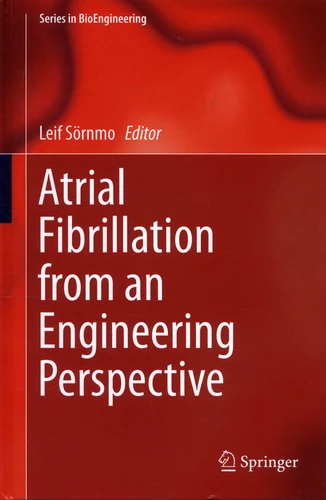Atrial Fibrillation from an Engineering Perspective
Par :Formats :
- Nombre de pages318
- PrésentationRelié
- FormatGrand Format
- Poids0.675 kg
- Dimensions16,1 cm × 24,4 cm × 2,5 cm
- ISBN978-3-319-68513-7
- EAN9783319685137
- Date de parution01/06/2018
- CollectionSeries in BioEngineering
- ÉditeurSpringer Nature
Résumé
Atrial Fibrillation from an Engineering Perspective provides an up-to-date overview of techniques developed for acquisition, modeling, and analysis of noninvasive, bioelec-trical signals reflecting this common arrhythmia. Special emphasis is put on emerging technologies for monitoring of atrial fibrillation in connection with ischemic stroke, interventional ablation procedures, and pharmacological treatment, applications which all depend on the availability of techniques for detecting and characterizing episodes of paroxysmal atrial fibrillation.
Detectors exploring both rhythm and morphology are described, as well as detectors confined to rhythm and better suited for low power implementation. A wide variety of approaches to modeling and characterization of atrial activity are described, emanating from a statistical and deterministic starting points. This book is suitable for graduate students, researchers, and engineers who want a comprehensive treatise of atrial fibrillation from an engineering perspective.
It may be used for self-study, as a supplement to courses in signal processing, or as a modern monograph by researchers in the field of atrial fibrillation.
Detectors exploring both rhythm and morphology are described, as well as detectors confined to rhythm and better suited for low power implementation. A wide variety of approaches to modeling and characterization of atrial activity are described, emanating from a statistical and deterministic starting points. This book is suitable for graduate students, researchers, and engineers who want a comprehensive treatise of atrial fibrillation from an engineering perspective.
It may be used for self-study, as a supplement to courses in signal processing, or as a modern monograph by researchers in the field of atrial fibrillation.
Atrial Fibrillation from an Engineering Perspective provides an up-to-date overview of techniques developed for acquisition, modeling, and analysis of noninvasive, bioelec-trical signals reflecting this common arrhythmia. Special emphasis is put on emerging technologies for monitoring of atrial fibrillation in connection with ischemic stroke, interventional ablation procedures, and pharmacological treatment, applications which all depend on the availability of techniques for detecting and characterizing episodes of paroxysmal atrial fibrillation.
Detectors exploring both rhythm and morphology are described, as well as detectors confined to rhythm and better suited for low power implementation. A wide variety of approaches to modeling and characterization of atrial activity are described, emanating from a statistical and deterministic starting points. This book is suitable for graduate students, researchers, and engineers who want a comprehensive treatise of atrial fibrillation from an engineering perspective.
It may be used for self-study, as a supplement to courses in signal processing, or as a modern monograph by researchers in the field of atrial fibrillation.
Detectors exploring both rhythm and morphology are described, as well as detectors confined to rhythm and better suited for low power implementation. A wide variety of approaches to modeling and characterization of atrial activity are described, emanating from a statistical and deterministic starting points. This book is suitable for graduate students, researchers, and engineers who want a comprehensive treatise of atrial fibrillation from an engineering perspective.
It may be used for self-study, as a supplement to courses in signal processing, or as a modern monograph by researchers in the field of atrial fibrillation.


